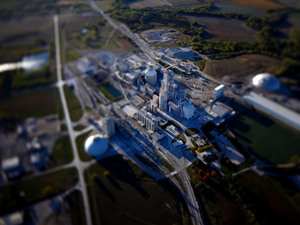You wonder why I go on about all the things you can do in your house to save power. Well the following article tells the whole story. As I said this a joke and the joke is on you. They will never get to the “smart” meters and once they do, so what. Then all you become is a part of the utilities load flattening program. Big whoop. Who wants to do laundry at 2 o’clock in the morning. Nice piece of writing though.
Thursday, January 12,2012
Ameren Illinois launches 10-year modernization plan
Proposed new rates could mean a decrease for some customers
Ameren Illinois, a subsidiary of Ameren Corporation, took its first step in implementing its Modernization Action Plan (MAP) on Tuesday, Jan.3. The plan will provide customers with a more reliable and modernized electric distribution system.
In a press release, Ameren said that over the next decade an additional $625 million will be invested in updating the Ameren Illinois electric delivery system, while also creating 450 new jobs during the program’s peak year. Ameren Illinois serves 20,767 customers in Sangamon County.
“Today’s filing with the Illinois Commerce Commission marks the beginning of an initiative that will enable Ameren Illinois to modernize its electric distribution system over the next 10 years in order to meet the service expectations of our customers in the 21st century,” said Craig Nelson, senior vice president of Ameren Illinois.
The filing includes the deployment of about 750,000 automated “smart” meters, greater use of advanced distribution system automation, the modernization and expansion of electric substations and the installation of new transformers.
Smart meters allow consumers and utility companies to monitor electricity more closely during the day through the usage of wireless transmitters, while also allowing a utility company to “talk” to the meters and adjust power usage and distribution throughout the day.
Ameren spokesman Leigh Morris said that a major advantage of the “smart” meters is Ameren customers will be able to take advantage of a “time-of-use service.”
Morris said that there is the potential, for people who choose to use the “time-of-use service” to save money.
“Customers can choose to buy electricity at a certain time of the day, at the certain price it is offered at during that time,” Morris said. “You can imagine that electricity is typically going to cost more at three in the afternoon than at seven in the morning. Like anything else, it is about supply and demand.”
:}
Go there and read. More next week.
:}


